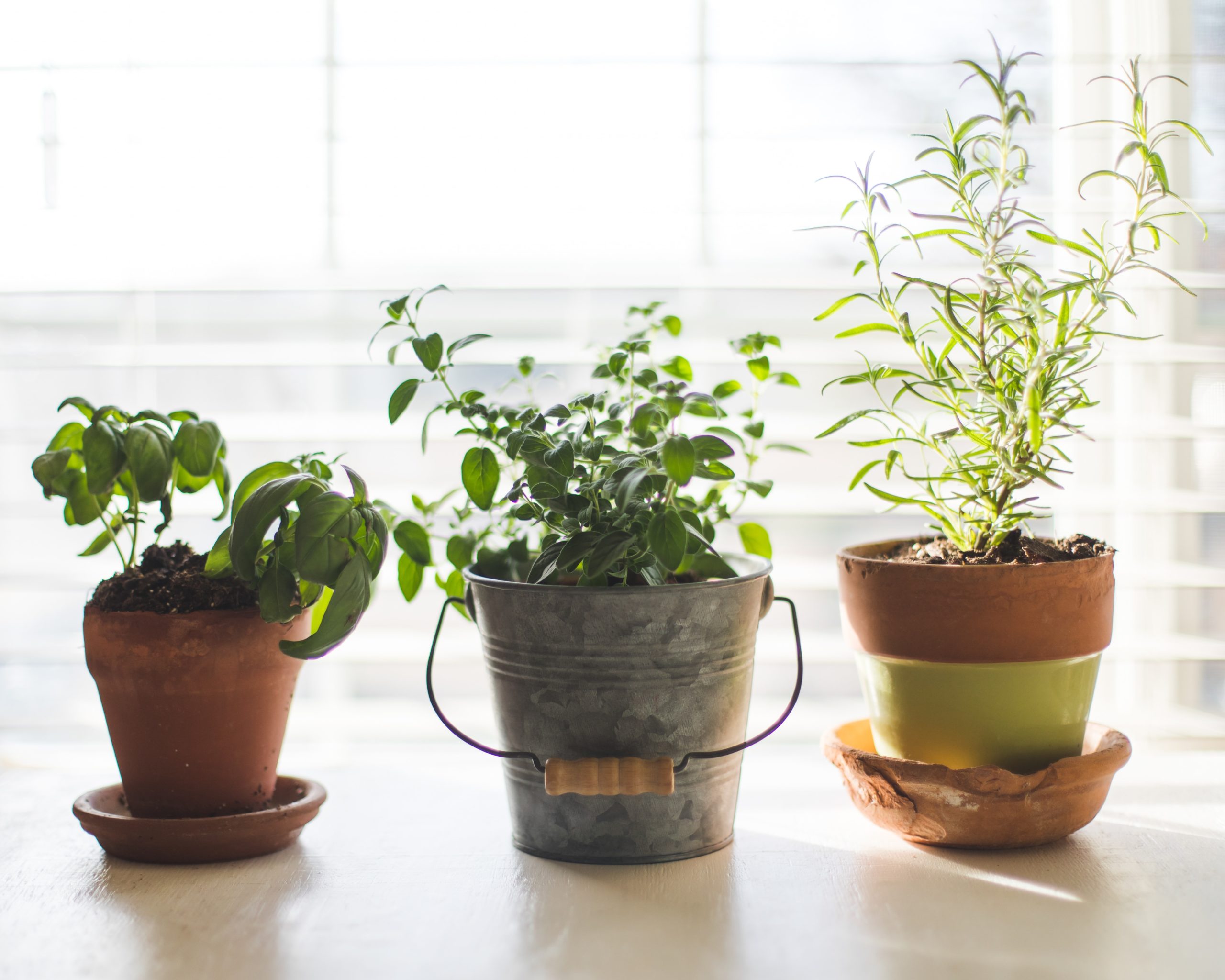
A show of hands… who hates purchasing herbs at the grocery store, only to have those herbs go bad within a week?
Wouldn’t it be convenient—not to mention, more affordable—to have your own indoor herb garden that you could rely on for your culinary creations?
For apartment dwellers or those without access to an outdoor space, an herb garden seems like a “maybe one day” dream.
But herb lovers, rejoice: you can grow herbs indoors.
Keep reading to learn how to get started with your own indoor herb garden.
Herbs to Grow Indoors:
- Basil
- Chives
- Cilantro (note: while cilantro can technically be grown indoors, this herb is a bit more finicky than others)
- Dill
- Mint
- Oregano
- Parsley
- Rosemary
- Sage
- Thyme
Pot your herbs.
Choose a well-draining pot for your herbs, like a terra cotta pot with a hole for drainage. If your pots of choice don’t have drainage holes, put a layer of rocks at the bottom before adding soil. This will allow the water to collect in the rocks, instead of waterlogging the roots.
Your herbs need soil that drains easily. Look for a soil labeled “potting mix.” This is a lighter soil that contains an aerator, like perlite, for easy drainage.
Let your herbs sunbathe.
This one is important: your herbs need at least 6 – 8 hours of sunlight per day to really thrive. In fact, the intensity of the light directly impacts the herbs’ flavor profile.
A south facing window works best to allow for the greatest amount of sunlight. In the winter months, if you’re in a particularly grey and cold location, you may need to invest in a growth light to meet these light requirements. Check out this grow light strip from Home Depot.
Be careful when placing your herbs directly on the windowsill. Leaves that are smooshed up against the glass have the potential to burn as the hot sunlight warms up the windows. Alternatively, in the winter, the glass may be too cold for your warmth-loving herbs.
An option is to place a small table next to your windowsill, so your herbs can still soak up that sunshine without being burned by the glass.
No windowsill? No problem. Try one of these ideas for growing your herb garden without a windowsill.
Not too hot, not too cold, but just right.
Herbs are comfort-loving creatures with a taste for the good life: between 60 – 75°F temps are just right. (I mean, who can blame ‘em?) Basil is particularly picky, preferring a consistently balmy 75°F.
Most homes fit this temperature range. Keep your herbs in a spot that isn’t too drafty or fluctuating in temperature.
Pass the water, please.
The key to happy herbs is moist soil, but not soaking wet. Allow the top 2 inches of soil to dry between waterings. This encourages the plant’s roots to grow deeper in search of moisture, which strengthens the plant. Generally, you’ll water your herb garden 2 – 3 times a week. If leaves begin to wilt, this indicates overwatering.
Let’s cook.
As much as we all love herbs, don’t go overboard with harvesting. In fact, removing more than a quarter of the plant per harvest causes stress and could kill your plant. Harvest just a bit at a time, each time.
Moving onto bigger and better things.
Eventually, your herbs will outgrow their pot and need to be transplanted. Signs that it’s time for your herb to move onto bigger and better things include roots peeking through drainage holes, a flopping plant, or when growth appears stalled.
You can repot your growing herbs to a bigger container; however, make sure it stays close to a bright, direct light source.
If you do have an outside space, you can consider transplanting your herbs into the Great Outdoors. Most indoor herbs can be transplanted directly into an outdoor garden, or simply kept in a larger pot and moved outside into the sunshine. The upshot of keeping your herbs in a container is that you can bring them inside once winter rolls around and the temperatures drop.
***
Happy herb growing!

